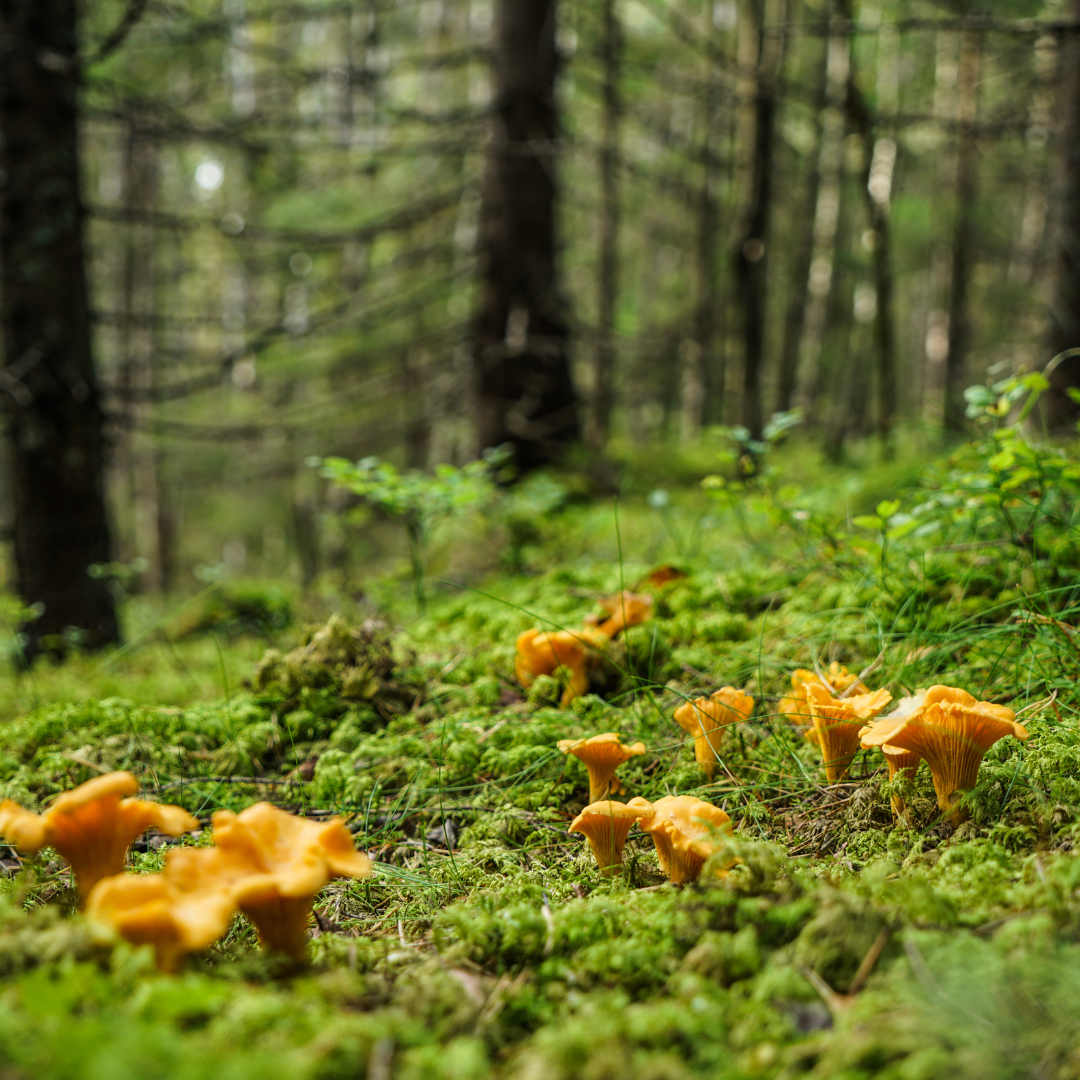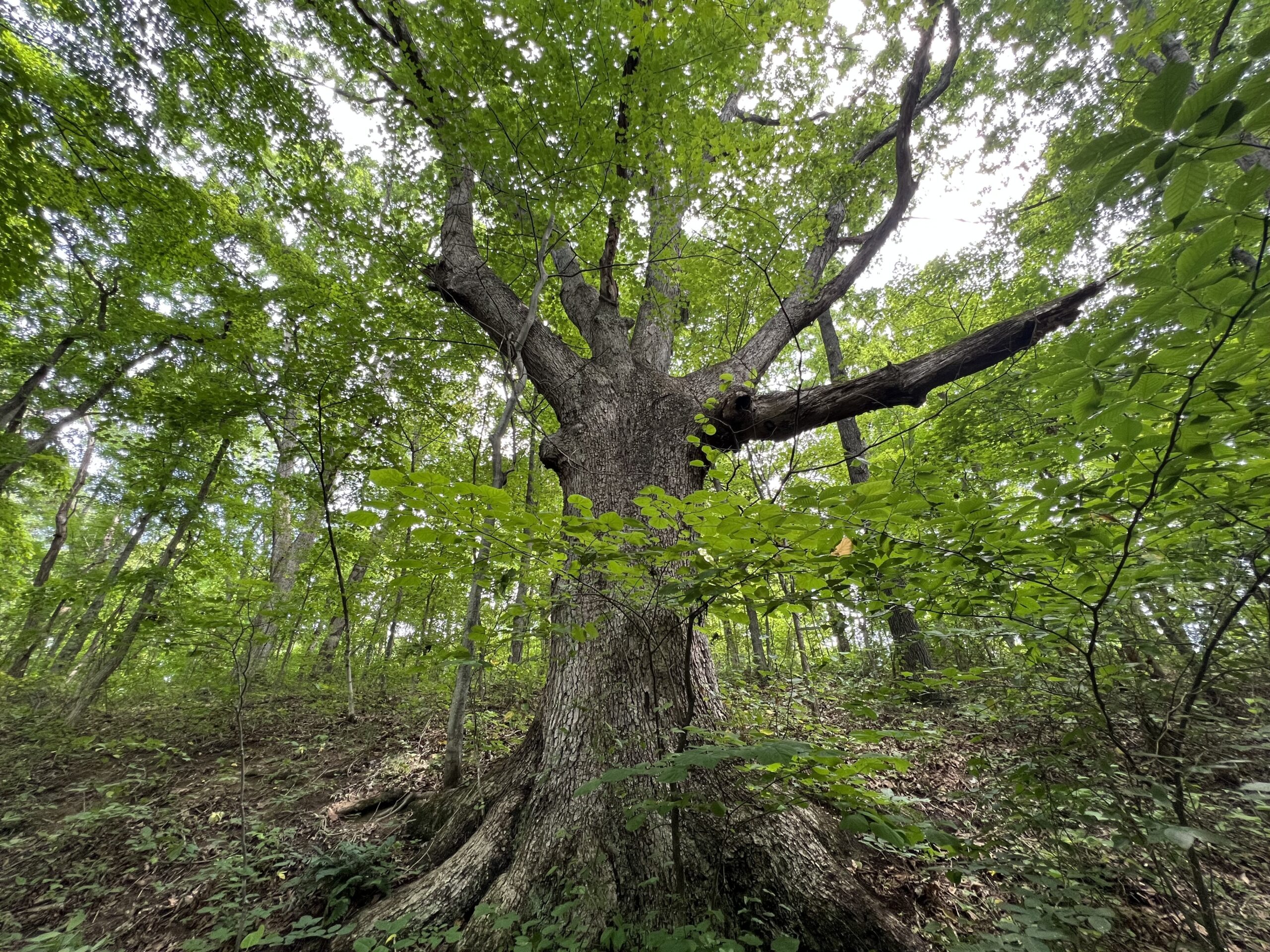Blog
Tagged In: clearcut, deforestation, environmental law, forests, fungi, mycorrhizal networks, Public Lands, Public Lands Protection, Sunny Oaks, U.S. Forest Service, Wayne National Forest
Seeing the mycorrhizal forest for the trees
Nathan Johnson, Director of Public Lands, September 23, 2022

We can no longer ignore the fundamental role that fungal networks play in connecting and sustaining our public lands.
The importance of the “Wood-Wide-Web”—known as mycorrhizal (my-cor-RHY-zuhl) networks—for forest health and carbon storage is one of the major reasons why the OEC is currently litigating Ohio Environmental Council v. United States Forest Service in federal district court.
This case challenges the “Sunny Oaks” timber project, which authorizes nearly 2,500 acres of clearcutting and similar forms of logging in the Wayne National Forest in Southeast Ohio.
UNDERSTANDING THE SUNNY OAKS CASE
The Sunny Oaks project developed from 2017 through 2020, a time when the Trump Administration dramatically increased timber sale quotas in many national forests, including the Wayne. The OEC’s litigation touches on the role of timber quotas in national forest management as well as the decline and fate of the critically important American white oak.
And, we believe this lawsuit is the first in the nation to focus closely on forest fungal networks.

All trees and certain types of fungi connect at the roots to form partnerships called mycorrhizas. These mycorrhizal relationships are the rule, not an exception. In fact, plants and fungi have been partnering for millions of years—since before the evolution of roots. The small and profuse strands of mycorrhizal fungi have 60 times more absorptive area than fine roots. As a result, mycorrhizal fungi dramatically enhance their host trees’ ability to take up water and nutrients. These fungi also connect trees to one another in mycorrhizal networks that can span many acres. Amazingly, trees connected by these networks can share nutrients, carbon, water, biochemical information, and even electrical signals.
>> Read our “Sunny Oaks” Legal Brief here.
>> And read our Reply Brief here.
Part of the trouble with the Sunny Oaks project is that science shows that fungal networks are highly sensitive to heavy timbering. Fungal network diversity, structure, and function can take 80 or more years to recover following clearcut logging—and may never fully recover. The outlook for fungal network recovery in oak-dominated forests like Sunny Oaks is even more problematic because oak-affiliated fungal networks are especially sensitive to heavy timbering. Clearcutting oak forests in the Wayne may not just eliminate the mature oak trees now present, it may also destroy the soil’s suitability for future oak ecosystem success. Heavy timbering threatens to destroy many of the fungal networks that connect, sustain, and protect the Wayne.
“Failing to see this fundamental aspect of forest ecology
means failing, literally, to “see the forest for the trees.”
Yet throughout Sunny Oaks’ development, the Forest Service declined to acknowledge or evaluate the ecological importance of fungal networks or the harm heavy timbering causes them. This “failure to look” is one of the live legal issues in this litigation: environmental law requires federal agencies to disclose and analyze the significant impacts their projects may have on the environment. If destroying the living networks that connect, protect, and sustain forests is not a significant impact requiring agency analysis, then what is?
We will keep you updated on the status of Ohio Environmental Council v. United States Forest Service as this litigation continues.
